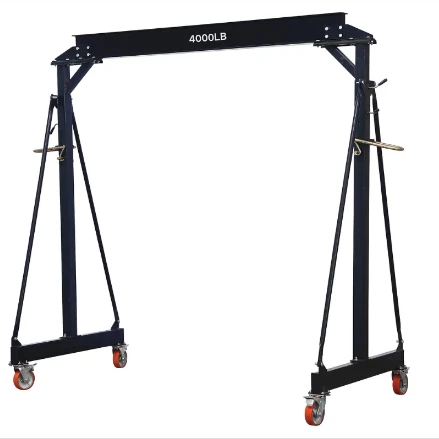trolly crane
The Trolley Crane Innovations in Material Handling
In the world of heavy lifting and material handling, the trolley crane stands out as a vital piece of equipment that has transformed various industries. From construction sites to manufacturing plants, these cranes play an essential role in facilitating efficient movement and positioning of heavy loads. This article explores the design, functionality, and applications of trolley cranes, as well as the significant advancements that have occurred in this field.
What is a Trolley Crane?
A trolley crane is a type of crane that features a hoisting mechanism mounted on a trolley, which travels back and forth along a beam or girder. This design allows it to lift heavy objects vertically while also moving them horizontally, making it an incredibly versatile tool. The main components of a trolley crane include the bridge (the beam or girder), the trolley (which carries the hoist), and the hoist itself, which is responsible for lifting and lowering the loads.
Trolley cranes are typically classified into two main categories overhead cranes and gantry cranes. Overhead cranes are fixed to the ceiling of a building or structure, whereas gantry cranes have their own supporting structure that allows them to move independently across a flat surface. Each type has its unique advantages, suited to different types of operational environments.
Advantages of Trolley Cranes
One of the most significant advantages of trolley cranes is their ability to maximize space utilization. By lifting and moving materials vertically and horizontally, they free up valuable floor space that can be utilized for other operations. This efficiency is particularly beneficial in confined areas where ground space is at a premium.
Additionally, trolley cranes are capable of handling a wide variety of loads, from delicate machinery to heavy industrial materials. Their adjustable speed and lifting capacities mean that they can be tailored to meet the specific needs of different tasks. With high lifting power and stability, these cranes enhance workplace productivity while ensuring the safety of operators.
Advancements in Technology
trolly crane

Over the years, there have been remarkable advancements in trolley crane technology. Innovations such as computerized control systems have transformed the way these cranes are operated. Operators can now enjoy precision control, making it easier to lift and maneuver loads with absolute accuracy. This level of precision not only enhances productivity but also minimizes the risk of accidents, creating safer work environments.
Moreover, the integration of Internet of Things (IoT) technology allows for real-time monitoring of crane performance. Sensors can detect weight loads, track usage patterns, and predict maintenance needs. This proactive approach to maintenance helps reduce downtime and extend the lifespan of the equipment, ultimately leading to significant cost savings for businesses.
Energy efficiency is another area where trolley cranes have seen improvement. Modern cranes are often equipped with energy-saving features, such as regenerative drives, which recover energy during lowering and braking. These innovations contribute to reduced operational costs and a decreased carbon footprint, aligning with the growing demand for eco-friendly industrial practices.
Applications in Various Industries
Trolley cranes are widely used across numerous industries. In the construction sector, they are vital for moving steel beams and other heavy materials to various heights. In manufacturing, they streamline the assembly line process by efficiently transporting components. Additionally, these cranes are indispensable in warehouses for sorting, lifting, and handling products and materials.
The shipping and logistics industry also benefits from trolley cranes, as they facilitate the loading and unloading of cargo containers at ports. Their capability to operate in a range of environmental conditions makes them ideal for various applications, from indoor environments to outdoor applications like rail yards and shipyards.
Conclusion
The trolley crane is a remarkable invention that continues to evolve with technological advancements. Its ability to safely and efficiently handle heavy loads has made it an indispensable tool in many sectors. As industries move toward greater automation and efficiency, trolley cranes will undoubtedly play a central role in shaping the future of material handling. Businesses that embrace these innovations will not only improve their operational efficacy but also set the pace for future developments in heavy lifting technology.
-
Unlock Seamless Relocation with Our Heavy Equipment Moving ExpertiseNewsJun.06,2025
-
Unleash Unrivaled Flexibility with Our Adjustable Gantry CraneNewsJun.06,2025
-
Unleash Heavy-Duty Efficiency with Our Industrial Gantry Crane SolutionsNewsJun.06,2025
-
Revolutionize Steel Handling with Our Magnetic Lifter RangeNewsJun.06,2025
-
Master Equipment Mobility with Premium Machinery Mover SolutionsNewsJun.06,2025
-
Elevate Your Material Handling with Magnetic Lifter TechnologyNewsJun.06,2025
-
YS Permanent Lifting Magnets: The Smarter Way to Handle SteelNewsMay.22,2025
